‘Today is Tuesday,” the whiteboard says in neat purple letters. Underneath, a student has drawn a map of square houses supporting lopsided roofs. Next to them, a tentative hand has been practising three-letter words: map, bat, cat, fan, ham, sad.
It’s a sight you might see in any school, except this whiteboard isn’t in a classroom. It’s propped up on an overflowing wheelie bin on the veranda because there’s no power, making the schoolroom too hot and too dark to use.
The students at Gamardi, an Aboriginal homeland community in the heart of Arnhem Land in the Northern Territory, about 11 hours’ drive from Darwin, also rarely have a registered teacher. At best, the visiting teacher from Maningrida, a 75-minute drive away, will make it there two days a week. For whole months, nobody comes.
“Education in remote communities is a massive failure,” West Arnhem Regional Council Mayor Matthew Ryan says. “It’s not fit for purpose. If this was happening in an urban setting, they’d sack the government on the spot. It’s appalling. Embarrassing.”
Gamardi has seven students permanently based there. None has ever had access to education five days a week.
NT: Schools in crisis
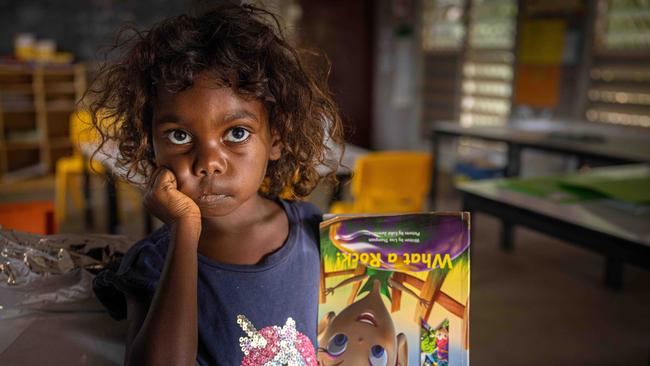
The shocking state of NT education
If the students at Gamardi are lucky, a teacher will turn up two days a week. For whole months, nobody comes. And then there is the sorry excuse for a classroom. ‘If this was happening in an urban setting, they’d sack the government on the spot.’

Kids fall off the money-go-round
While lush lawns and gardens welcome students inside Alyangula, less than 20km away, Angurugu’s imposing gates present a bleak, very different picture.
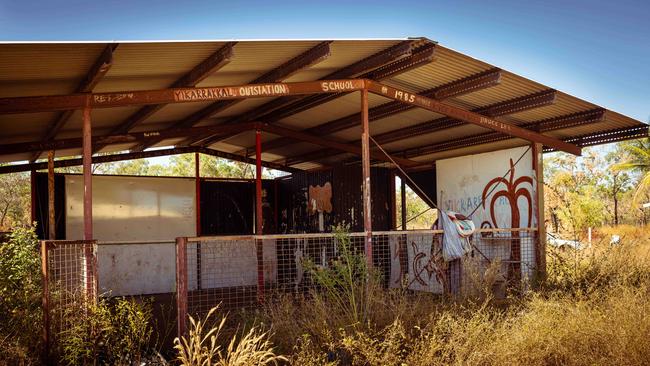
Schools short-changed by millions
An analysis of Northern Territory schools most affected by underfunding shows all but three had an Indigenous student population of more than 95pc and were remote.

Security, prospects take toll at schools
Attendance rates at remote Northern Territory schools are as low as 18.7 per cent and have been falling for a decade.

Scandal of the nation’s forgotten schoolkids
The NT school system is failing students by leaving at least one in five effectively unfunded, offering an education so bad that most fail minimum literacy and numeracy standards.
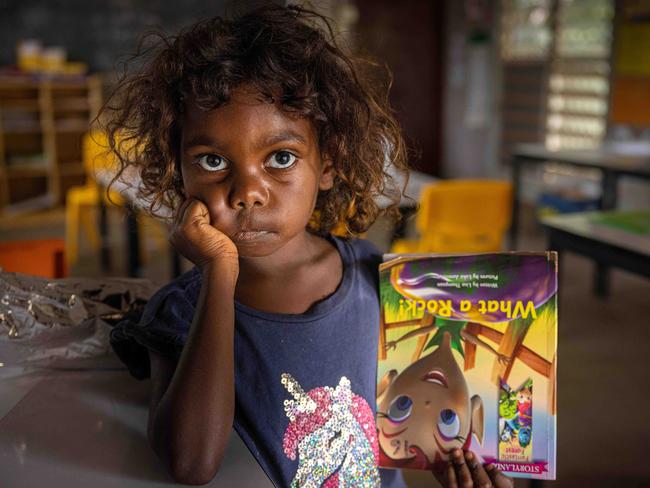
“We should be equal,” traditional owner Dale Pascoe says. “I want to see the teachers teach my grandkids to have that knowledge and wisdom.” An urgent upgrade to the facilities also is needed, Pascoe says.
Temperatures here are in the 30s year-round, and the veranda is the only place that catches the breeze, so that’s where the students learn, leaning over bread bags and Weet-Bix boxes spilling out of the wheelie bin to write lessons on the whiteboard.
This afternoon, the kids have gone fishing in the nearby Blyth River. In their absence, the community is quiet except for the crows crying their namesake. Wak wak, they say, repeating the Wurlaki and Djinang word for crow.
“We’re here to be patient,” Pascoe says of Gamardi’s years-long fight for education. “But what we need, what we want, you know, people have to understand.” The cracks in his careful patience are starting to show.
The reason Gamardi’s students don’t have access to power, water or regular teachers is down to one word: school. Gamardi is not technically a school. It is one of 31 Homeland Learning Centres operating last year in the Territory.
An HLC is considered a classroom attached to a public hub school in a bigger community. As a result, they fall through the cracks of education reporting processes. They’re not listed on the My School website and there’s no public record of student numbers, teaching ratios, educational outcomes, facilities or funding. As a result, HLCs bear the brunt of the Territory’s $214.8m annual funding shortfall. There is also no policy that governs how HLCs are established, suspended, closed or reopened.
John Guenther, research leader for education and training with the Batchelor Institute of Indigenous Tertiary Education, estimates about 400 students receive education in HLCs.
“It’s not only a social justice issue, it’s a human rights issue,” Guenther says. “And what’s more, it goes against the spirit, if not the law, of the Education Act. I can’t think of an example in Western Australia or South Australia where that would be considered OK. It is considered to be OK here.”
Gamardi is one of 13 HLCs attached to Maningrida College in the heart of Arnhem Land that, according to locals, are covered by only two teachers.
Teachers usually do one day of admin, prep and meetings a week in Maningrida, leaving a total of eight teaching days a week shared across the region. With travel time factored in – the homelands are between 30 and 120 minutes’ drive from Maningrida, often on rough and weather-dependent roads – it’s easy to understand why people use the words “stretched thin” to describe the gig.
At most, the Maningrida HLCs have a registered teacher one to two days a week, with an Indigenous assistant teacher employed to deliver schooling the rest of the time.
“It’s not good enough,” Pascoe says. He says that while the local assistant teacher does a great job, the role isn’t designed to replace a registered teacher.
A Department of Education spokesperson says assistant teachers help “make learning more meaningful, relevant, accessible and culturally responsive”. But they aren’t registered teachers and the enterprise agreement defines the role as a person employed to “assist in a teaching capacity”.
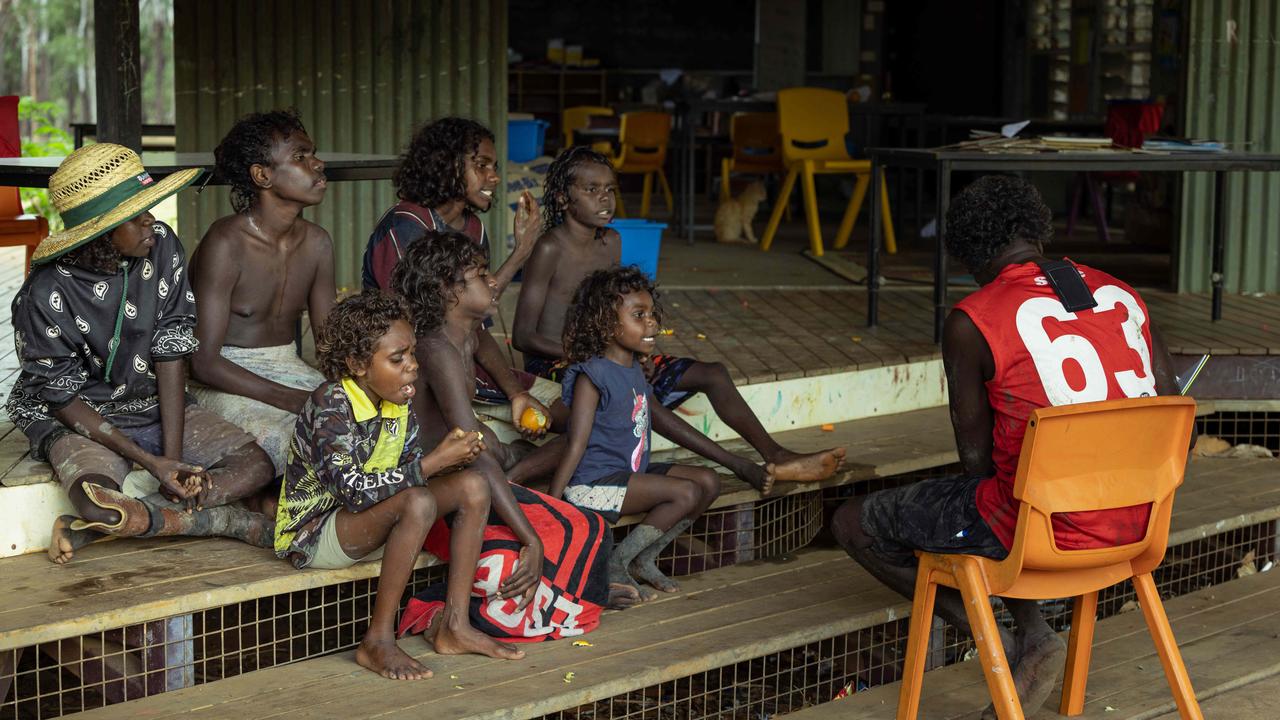
At Gamardi, the local assistant teacher often runs the class alone. This year, the students received their first day of education with a registered teacher on Thursday, May 18, more than three months after the school year began.
An NT Education Department spokesperson says this was because flooding of the Blyth River made the homeland inaccessible by road. However, Gamardi has an airstrip and it is common practice through the Territory to fly teachers to inaccessible schools, which has been the case at Gamardi in the past.
Part-time schooling is only part of the problem. Many of the Maningrida HLCs are also in disrepair. Sources have told The Weekend Australian at least six of the Maningrida HLCs don’t have power and at least five don’t have water. Some school buildings are reported to be inhabited by camp dogs that leave behind ticks and fleas.
About 1300km south of Maningrida, and 80km southwest of Tennant Creek, it’s a similar story.
Steve Edgington, the Country Liberal Party member for Barkly in the Legislative Assembly and the Territory’s opposition Aboriginal affairs spokesman, has concerns about facilities at Mungkarta, which has had up to 37 students and has a teaching principal.
Edgington says the Mungkarta classroom is in reasonable condition but the playground area has no shading, fencing needs repairs to keep out dogs and donkeys, and the school needs indoor kitchen facilities.
“People, what they’re expecting is some of these basic things to be done, but they’re very despondent when they’ve been asking for a number of years and things haven’t changed,” he says.
Edgington says it’s hard for people in remote communities to see infrastructure announcements, such as a notorious $165m Darwin overpass project, without feeling left behind.
“In some ways that speaks for itself, the investment in infrastructure versus education in the bush,” Edington says.
Back in Maningrida, Garth Doolan leans forward, elbows on his knees, drinking coffee under a fig tree at Wild Foods Cafe.
He’s one of many people who have made the hard decision to move away from homelands and into central Arnhem Land’s major township. Doolan calls it “the big city” but Maningrida has about 3000 people, and it’s bursting at the seams.
Like many remote towns, it has a housing shortage, which contributes to the town’s social issues. Maningrida has one of the world’s highest rates of rheumatic heart disease, a condition linked to poverty, overcrowding and lack of medical care. The cost of living is high.
Territory independent member for Mulka (East Arnhem) and Yolngu man Yingiya Mark Guyula spoke on the importance of homelands – both culturally and politically – at a UN forum earlier this year.
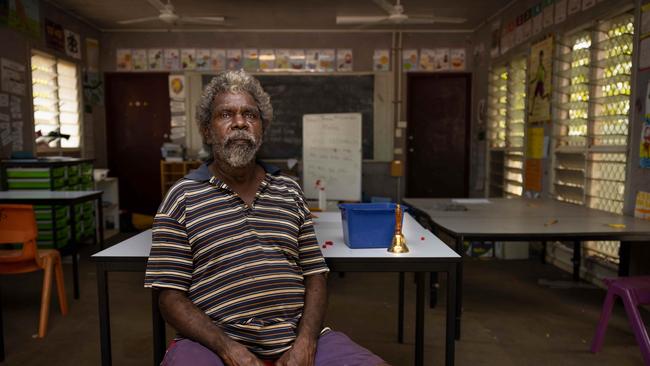
He said the existence of Aboriginal and Torres Strait Islander people relied on “our right to care for and be nurtured by country” and that underinvestment in homelands infrastructure, such as schools and housing, had created social issues in larger towns.
“Homelands are our Yirralka – our clan estates – the place where our identity connects to the land,” Guyula said.
“But our homelands have suffered from decades of government policies that have undermined our capacity to live on our country, pushing people into larger towns that are overcrowded and full of problems that stem from disempowerment and poverty, and resulting in an overwhelming number of avoidable deaths.”
Doolan’s homeland, Gochan Jiny Jirra (also known as Cadell), is 45km out of Maningrida. One reason his family moved into town is that across the course of his lifetime he has seen the provision of education go backwards in his homeland.
Once a small school in its own right, Gochan Jiny Jirra has a large schoolroom, a basketball court and playground, with a three-bedroom, airconditioned teacher house beside it.
When Doolan attended school there, up to two Balanda (non-Indigenous) teachers lived in the homeland, running the school five days a week, alongside Indigenous teachers.
He says he was able to learn in his own language and care for country, as well as study the mainstream Australian curriculum.
“It was a nice way to grow up, peaceful, no bullying, no teasing,” he says, citing the problems most people from homelands raise about having to bring their children into larger communities for schooling. Others worry about crime and easier access to alcohol.
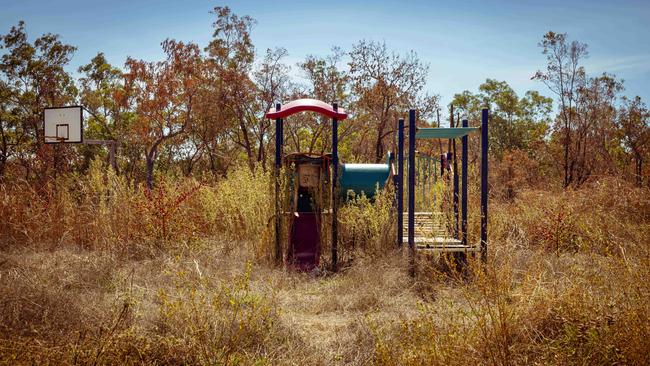
Doolan’s brother, Derek Nulla, a soft-spoken man with a bucket hat flipped up in the front, chimes in. He preferred living on country, too. “We were happy,” he says.
But around 10 years ago, Gochan Jiny Jirra was relegated to HLC status. When they describe what happened next, Doolan and Nulla both bring their hands together in a clap. “Boom,” Doolan says. “It went down. Two days education, sometimes one day education, not five days.
“Just daytrips sometimes,” Nulla adds.
Doolan says the inconsistent education meant students eventually stopped attending: “Who wants to go to two days school?”
Two-day education has made it impossible for Doolan and Nulla to live on their homelands year-round. Nulla has four children, Doolan has three girls. They wanted their kids to have opportunities and regular teachers, so they moved to Maningrida.
On the one hand, it’s a decision that has paid off – Doolan’s daughters have all completed school. One is doing a business degree, another is in the army and working in health, and the third works in education. But they know the decision has cost them and their families something important, which is why Doolan is still fighting to reinstate full-time education in his homeland.
He echoes Pascoe when he says: “We’ve been patient, we’ll keep talking, waste our mouths, like our ancestors did before. But we just got to keep trying.”
The NT is in many ways a difficult place to deliver education and other services. Seventy per cent of schools are located in remote or very remote regions, and 27 per cent of schools had less than 50 enrolments in 2021.
“Any education system is complex,” Charles Darwin University emeritus professor Greg Shaw says. “Any classroom is complex, beyond what people normally think. And we try to make these things not complex by organising people in classes, by having standards, but the reality is that people are complex, that needs are complex and situations are complex.
“And in the Northern Territory that’s even more so.
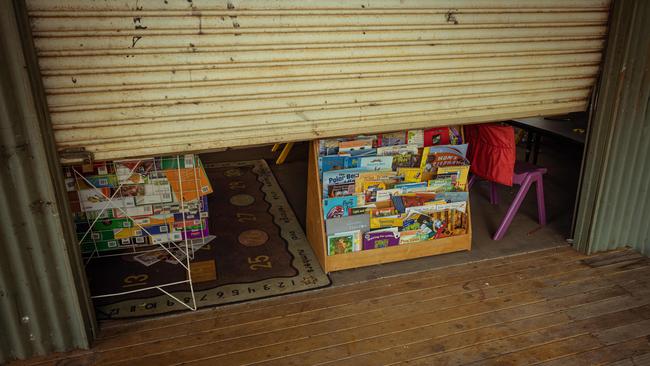
“In terms of Indigenous education, it’s a much more in-your-face complexity. So the difficulties that we face are substantially more, I think, than you would find in other jurisdictions, and we have other things that work against us; you know, size, and resources to be able to support, the isolation, the distances and all those things. Teachers, the difficulties in hiring and compensating them, and so on. They all add to the difficulty and complexity.”
The Weekend Australian asked NT Education Minister Eva Lawler a range of questions on HLCs, including about the woeful conditions of some HLC classrooms and claims that the delivery of part-time education in HLCs was a breach of human rights obligations. Lawler declined an interview and sent a written statement that did not address the questions.
Although it’s clear that providing education to small, remote communities is complex and expensive, there are examples of well-funded small schools in the Territory.
On Tipperary Station, a large cattle property about 200km south of Darwin, nine students – none of whom is Indigenous – have a dedicated public school with the full-time equivalent of 1.1 teaching staff.
Guenther, of the Batchelor Institute, says a lot of work needs to be done to bring remote schools up to an equitable standard.
“Tipperary Station is a good example, where you see white kids that are in the bush, they get it all,” he says. “(The government) can’t use the excuse that it’s a long way away, and it’s very difficult, and it costs money to provide education in those places, very simply because it is possible to provide education in those places.

“You only have to go to a mine in the middle of the Tanami Desert, and you’ve got every bell and whistle that you could possibly have – you’ve got internet, you’ve got an asphalt runway, you’ve got proper housing, you’ve got everything.
“There is no reason you can’t do the same with education in remote communities. And what’s appropriate shouldn’t be any less than what a kid in an urban setting gets. And that includes adequately facilitated classrooms, good teaching and teachers. And infrastructure, whether it be water, internet, power – these are the things that are often missing.”
A 2014 review of Indigenous education commissioned by the NT government said HLCs raised “issues about equity and quality in the delivery of education for all NT students”. It cited rundown facilities with water quality, hygiene and health and safety concerns, as well as concerns that the lack of reporting on HLCs in My School made it impossible to assess educational outcomes. The review also suggested that hundreds of Indigenous students lived in homelands with no education provision at all.
The Weekend Australian requested figures on enrolment, attendance and staff teaching days from the NT Education Department. A spokesperson said enrolment and attendance data for the 31 Homeland Learning Centres was not available. But one person was able to access these figures: Leon White.
In 2019, White, a recently retired principal who has lived in East Arnhem Land since 1974, took up a department job reporting on HLCs across the Territory.
When he headed for the country’s most remote pockets, he could still remember when homeland schools were “a hive of activity”.
Instead, he was shocked to find that of the 32 HLCs operating during the review, only 11 were receiving full-time education and many had minimal access to registered teachers, ranging from one or two days a week, to once a month.
Visiting teachers were staying in vandalised buildings or tents, children were learning in termite-infested, condemned buildings or, in one instance, under a mango tree. In Wurdeja, the fan switches were located on the ceiling between the fan blades; in Manmoyi children had a basketball court but no basketballs; and the six secondary students attending Mungkarta were enrolled as year 6 students because there was no secondary program.
In Langarra, an HLC out of Milingimbi, residents expressed concern about the safety of the school building: “We risk it and have our kids go to that classroom because we want education.”
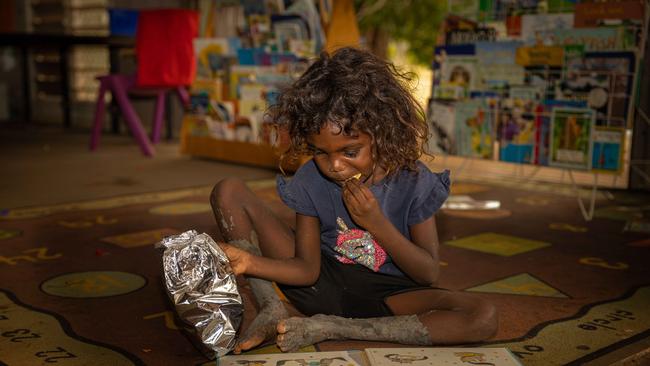
White says he’s not sure why the report was never released. He says none of his recommendations were implemented.
“There aren’t enough people in the Education Department on the 14th floor who know about their own reality,” White says. “They haven’t worked in the bush. They even had one character who didn’t know what a homeland was.”
When asked if the inconsistent provision of education to remote Indigenous students is racist, White is pragmatic. “Well, the outcome is racist,” he says. “I think ‘lacking in empathy’ is the term I’d use. Not understanding or wanting to understand the reality for these kids and their families.”
Russell Brian lives in Maningrida, 40 minutes from his homelands, Buluhkaduru. It isn’t far but Brian can’t get back there because he doesn’t have a car. As he jokes, he’s not “millionaire enough” to afford one and not “boss enough” to steal one. There’s no other transport, so he’s stranded, off-country.
He misses it. “I can feel my country calling to me,” he says.
Orphan country is how many Aboriginal people describe it, two words that capture a deep fear about what happens when country is bereft of its people.
Brian wants to make sure that doesn’t happen in his homeland, which is currently empty. In the past, the place was thriving – at times Buluhkaduru had 40 kids, enough to outgrow the first schoolroom, an open tin structure with a corrugated iron roof.
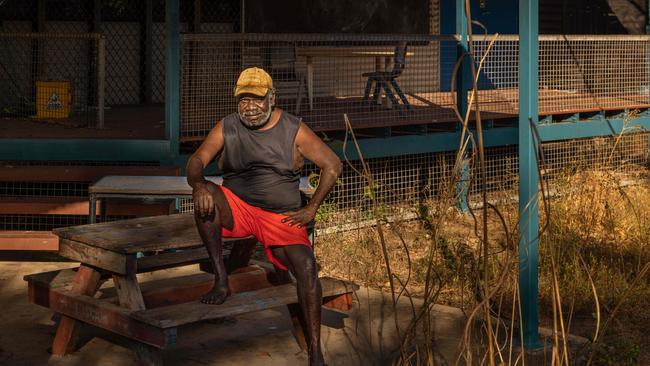
In 1997 the government opened a modern school, complete with playground, bubblers and a satellite dish. Brian remembers it as a great day – everyone celebrated with kangaroo and buffalo meat. The school is still there, in good condition. “We were learning both ways, Indigenous ways, Balanda (Western) ways, and it was really exciting for us,” Brian says, of his own education in Buluhkaduru. “We went to each homeland for sport and stuff. There were things to do. We had dancing nights, even doing studies … we loved it.”
But as education provision dwindled, Brian and his family made the decision to move off-country. Son Eshua, 17, is a promising footballer who wants to become a defence force pilot. A two-day education wouldn’t get him there.
Now, it has been more than a year since Brian and Eshua have been to Buluhkaduru. When they arrive, the first thing they do is visit Brian’s father, who died last June and is buried near his old house.
Eshua wanders through the playground, spinning a basketball that has been untouched for a long time. Although he has big dreams, he’d like to come back eventually.
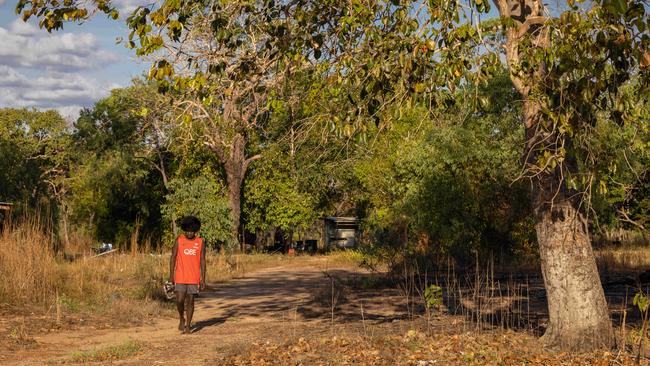
“I want to go to university,” Eshua says. “And play footy, or find out if I can play. And have a great life, I guess.
“But then maybe I’d come back home. Go bush and fishing and stuff. Sometimes I want to stay in the city, but it’s too much wearing boots and stuff. I want to come home and walk barefoot.”
With Brian’s father gone, it falls to Brian to teach the next generation the things his elders taught him, like when to use poison-leaf to catch fish, what flavours go best with emu meat, and how to navigate by the sun and the ant hills. But to bring his people back, he needs a full-time school.
“If we have a school then more people will come back, there will be opportunity for the kids,” Brian says. “Learning their culture, learning the country, naming all the country. They could be Bininj (Indigenous) scientists. Bininj can tell, from the ground to the top, they can see by songline, by looking. He doesn’t want to go to the moon because he knows everything up there. Balanda people get everything, fancy things, you know. Not us. Our ancestors, what they left … all the evidence, it’s all there for us. We don’t write it down in a book, we’ve already got it inside. It’s inside your body.”
The sound of wheels on gravel breaks the silence and suddenly Gamardi is full of children, spilling out of a beaten-up LandCruiser on the way back from mud crab hunting. Rekayia Rankin, 14, brandishes a fresh-caught shark as the kids run off to jump on a trampoline or in the school playground, avoiding the jagged parts where the plastic has perished in the sun.
Pascoe’s partner, Pauline James, appears, offering the kids snacks. She’s a teacher, too, although it’s not a job she’s paid for. Her life’s work is to teach the kids to find bush honey or mud mussels; how to roast fish on the fire.
This is part of the premise of two-way education. Her people will teach the Bininj way of knowing. The government will teach Balanda knowledge.
Pascoe and James feel they’ve held up their end of the bargain. When the local assistant teacher employed by the department is unwell or needs to take leave, they step in, unpaid.
“I help teaching, for future generations,” James says.
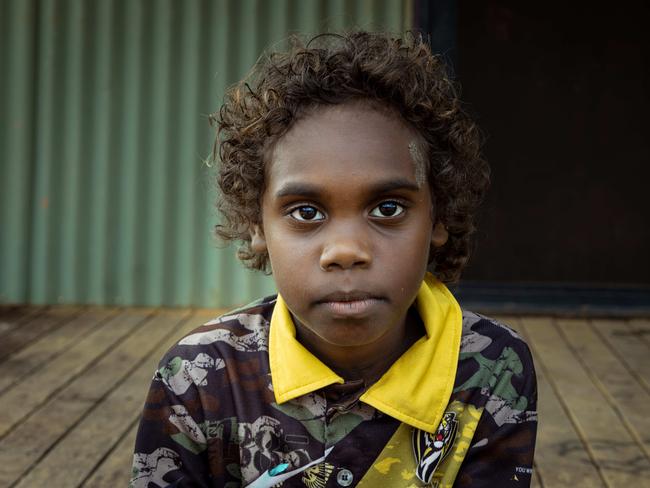
“We always stay here, wet and dry. Other families go into town but we’re here. We were born here and we like it. The old people pass knowledge on to the kids of the future.”
As the kids chat about what they like about school – seven-year-old Anastasia Guyula loves reading and writing, Rhienne Pascoe, 13, loves maths and painting – there’s another lesson happening in the background. It’s about how to cook the shark.
It starts with removing the bladder, the children are told. That’s how you know if it’s good or bad. The process takes time and patience. The shark must be skinned, then sliced, then you must pat the meat in your hands, back and forth, to soften it. It’s cooked over the fire, a long ritual.
“That’s how we do it,” the elders tell the children.
Eventually, everyone ends up back at the school, mud from their excursion still climbing up their feet and calves.
The heat of the day is still in the classroom, with its broken doors and unpowered fans, so the veranda is the meeting-point. They congregate, in front of the wheelie-bin whiteboard, even after-hours. An adult is talked into reading.
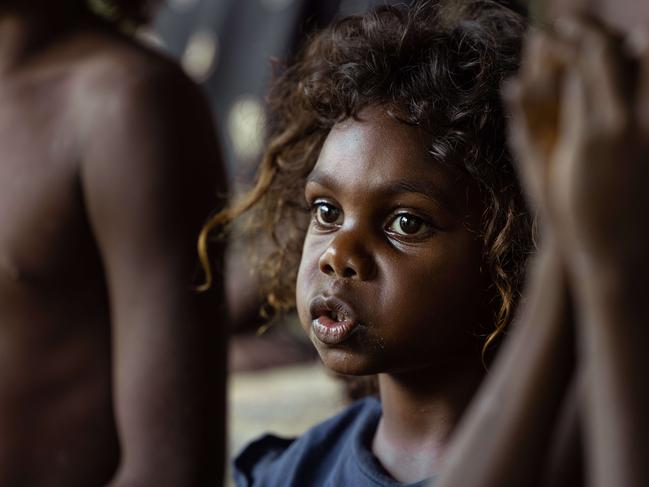
He holds a picture book to an audience of wide eyes and wild hair. He encourages interruptions, the children’s voices a chorus. They slide between English and Wurlaki and Djinang, naming the animals on the page and counting how many legs each of them has.
Behind them looms the classroom, stagnant and unused. The playground in disrepair. The sinks that have not had water run through them in many years.
Even here, their eyes are on the teacher, ready, happy to learn.
Kylie Stevenson, Caroline Graham and Tilda Colling are independent journalists working in the Northern Territory and Queensland. This project was supported by the Meta Public Interest Journalism Fund.

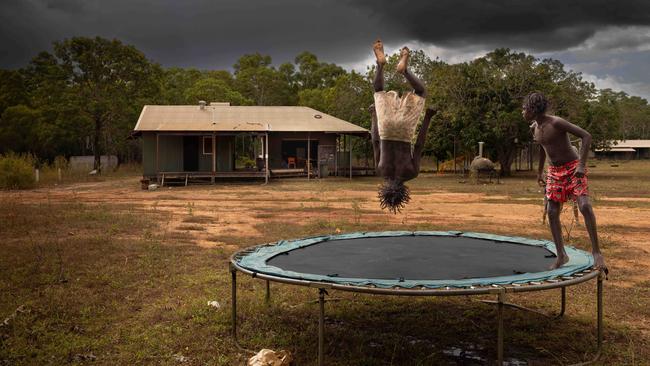
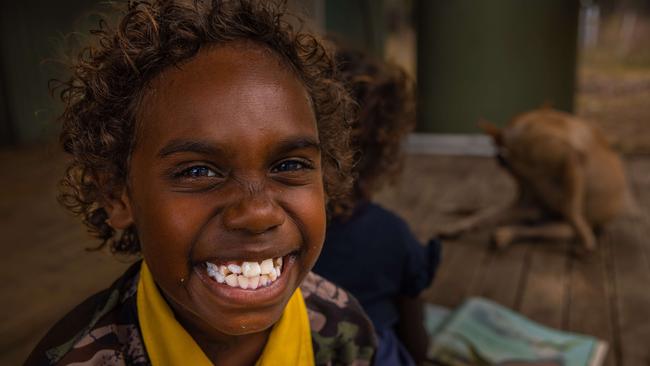
Add your comment to this story
To join the conversation, please log in. Don't have an account? Register
Join the conversation, you are commenting as Logout